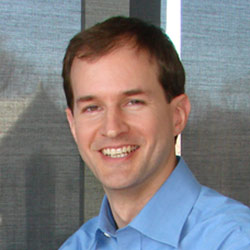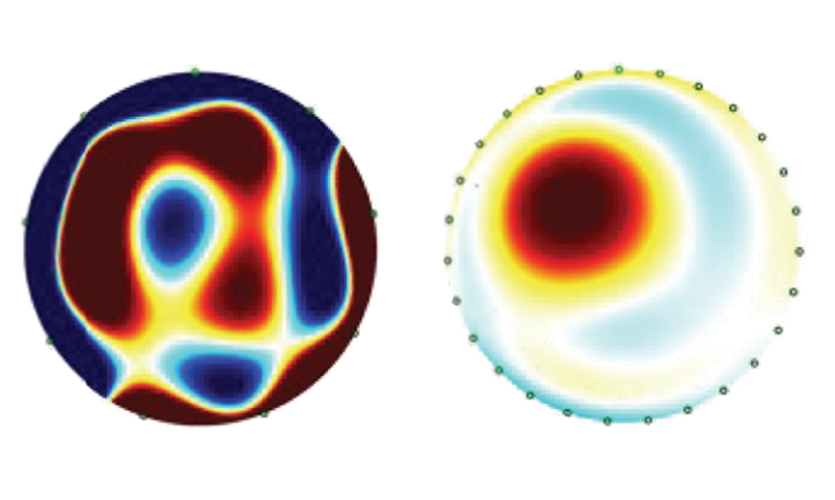The Problem:
Prior methods for visually representing variations in electrical resistance throughout a volume necessitated the inclusion of noisy data, which lowered the resolution.
Prior methods for visually representing variations in electrical resistance throughout a volume necessitated the inclusion of noisy data, which lowered the resolution.
This work demonstrates an algorithm to select only the highest-signal measurements.
Cleaner, higher-resolution images can expand possible uses for electrical resistance mapping in biomedicine, structural testing, and robotic skins.
Professor Matthew Grayson, Professor Suzan van der Lee, graduate student Claire Onsager
The ability to visually represent internal electrical resistance variations within a body is called electrical impedance tomography (EIT). EIT has applications across numerous fields, including defect detection in electronic materials, medical imaging to determine organ function, or even to assess soil quality and moisture content.
Of course, the technology is not perfect due to the flip side of one of its strengths: EIT uses data from all possible available measurements for a given number of electrical contacts. While this allows for a complete picture of electrical resistance, it also introduces noise from the weaker signals, and the result is suboptimal and, in some cases, unusable resistance maps.

Working with geophysicist Suzan van der Lee, Grayson and a small team of his graduate students led by Claire Onsager decided to add more contacts to increase the number of measurement options without increasing the number of measurements itself. Their algorithm is then able to select only highest-signal measurements, resulting in higher-resolution and more-accurate images. Crucially, the work makes three-dimensional (3D) electrical imaging possible, potentially laying the foundation for new fields of research.
This development comes from their newly derived set of equations that make it possible to map electrical resistance throughout a conducting body faster and with greater precision. The algorithm defines a figure-of-merit – a guiding star – that can distinguish the quality of one possible set of measurements from another. By letting a computer sample millions of possible measurements and compare each one, an optimal choice can be found whose fidelity greatly exceeds the empirically chosen one. Since this optimization only needs to be run once for a given measurement system, the result is a faster, almost instantaneous, mapping as well as the potential for arbitrarily higher resolution.

“It will now be achievable to create a 3D conductivity map of a human torso for diagnostics for medical applications or of an airplane fuselage for non-destructive testing for mechanical engineering,” Grayson said. “We can also create robotic skins that are robust against wear and tear with cheap conducting polymers without risking damage to delicate contacts, and sensors for prosthetic limbs that can translate muscle movement in the forearm to precision hand gestures.”
Grayson is a professor of electrical and computer engineering at the McCormick School of Engineering. van der Lee is the Sarah Rebecca Roland Professor and director of computing in the Department of Earth and Planetary Sciences at the Weinberg College of Arts and Sciences.
“Interdisciplinary work like this happens at Northwestern because of intersections of expertise and because of the serendipity of proximity. As an electrical engineer, I can walk down the hall and knock on the door of a geophysicist. Who knew that our cross-disciplinary expertise would open an exciting new frontier in biomedicine, structural testing, and robotics?” Grayson said.